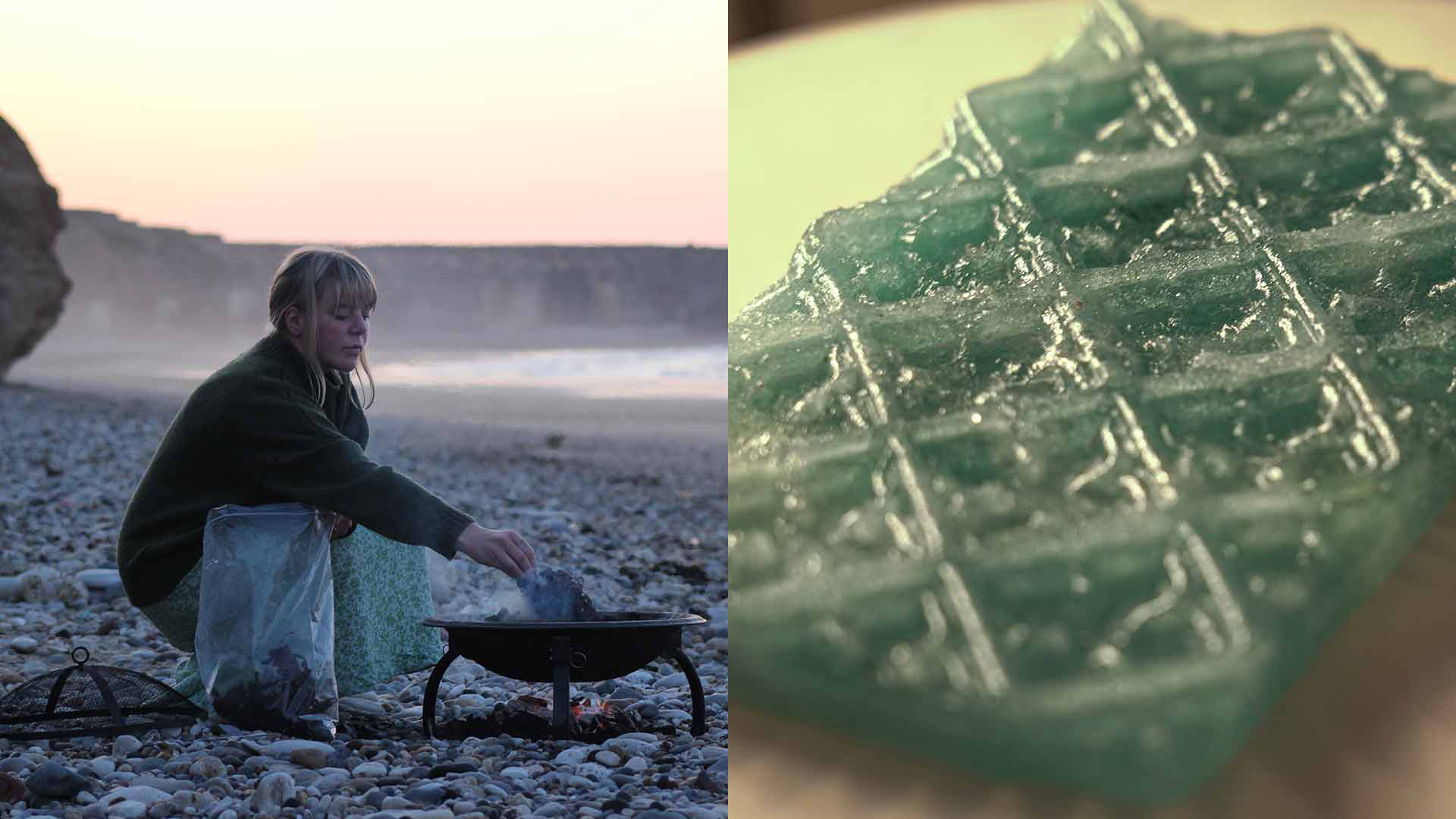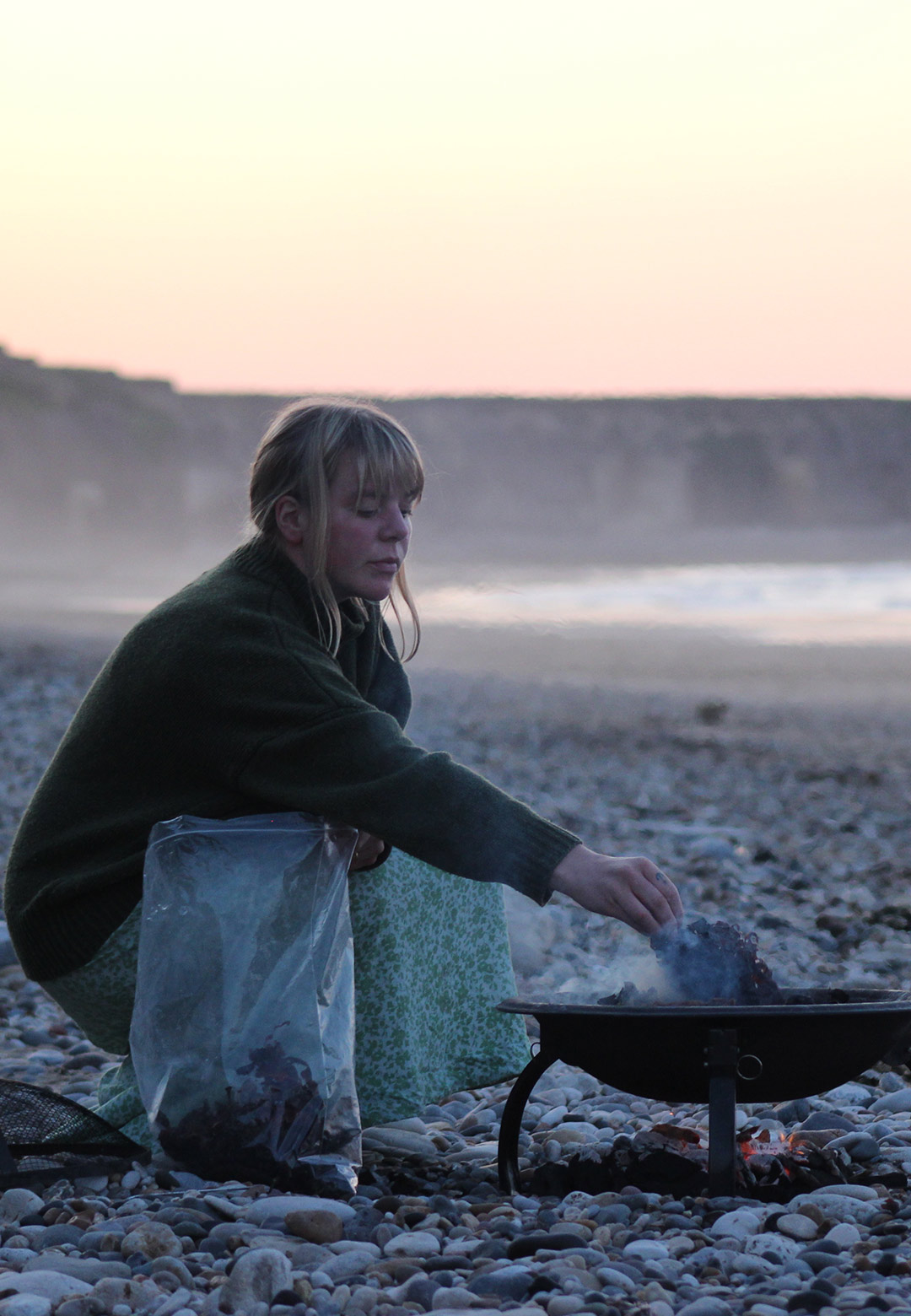The act of making glass feels like a magical process: turning sand into molten liquid and then turning it into a translucent, shimmering solid. This is especially true for glass artists and craftspeople who make their own formulas, often turning scrap and waste into globes and vessels. The process itself is a gruelling, research-intensive task that requires patience. London-based designer, Lulu Harrison demonstrates this through her experiments with the ancient art of glass-making that informs her practice.
In conversation with STIR, she elaborated on how she got into the craft and the work that goes into her glass art. Having lived near the coast, Harrison was always interested in working with coastal materials and communities in her studies on the future of materials at Central Saint Martins. Her first projects involved experimenting with crushed shells and various binders to explore new material processes, which led to discovering that shells could be used as the calcium carbonate component within glassmaking. This led to a collaboration with river organisations, in a bid to find alternatives to the finite highly processed materials often used in glass making, instead using discarded mussel shells for her craft. Since then, she has forayed into making her own furnaces and working with other glass scholars and blowers to refine her techniques.
The craft of creating glass formulas from raw materials is already a niche field, but Harrison’s rigorous historical research that informs her contemporary designs adds a new layer to the field. For instance, through her research (combining local geography, history, and craft), she discovered the Forest Glass era in late medieval northwestern and central Europe. Her inspiration stems from the localized techniques of making glass during that period, using materials from the region. As she explains, “Glassmakers were in essence able to create ‘geo-specific’ glasses according to the raw materials available.”
Harrison’s own practice seeks to explore this idea by seeing how ancient processes can inform the future of the craft. Through working with groups such as PEGG (the Post Disciplinary and Experimental Glass Group) based in Newcastle, she has developed an understanding of different firing techniques and fuel sources used throughout history. The process of making her artefacts, and creating the right formula is fascinating and involves not only knowledge of chemistry but also a particular attention to detail.
She explains, “The first step involves choosing the materials I am interested in working with and running some initial tests. Over the last summer, I created over 30 new successful recipes working with various local / waste materials close to the Northumberland coastline. These include different local sands, alkali sources such as kelp, bracken and wood ash, and calcium sources such as shells and fish bones. The processing of the materials is incredibly laborious [involving] washing, drying, ashing, grinding and sieving, and finally mixing with other materials to create the final ‘batch’. The batch is then taken to a larger furnace within a hotshop, where it is melted down in several stages to reach a workable molten glass.”
A primary concern in Harrison’s practice is demonstrating sustainability through working with local conditions. “I like the glass pieces to be reflective of the materials used to make them and the region they’ve come from, especially through structure, form, and colour. A lot of my work is also based around collaboration, and working with different industries,” she notes going on to observe how it’s a continuous process of learning and unlearning.
“With this kind of art form I feel like I am always learning and discovering ways to refine my process. A lot of my work is quite scientific, including subjects such as batch calculation, chemical analysis and compatibility. I feel like I am constantly learning with each new test or piece of glass which brings new results and findings.” The British designer's recent collection Thames Glass, in collaboration with Thames Water, involved collecting river sands, wood ash, and waste quagga mussel shells for the pieces. The glistening artefacts were displayed at the London Design Festival in 2023.






 Sign in with email
Sign in with email










What do you think?